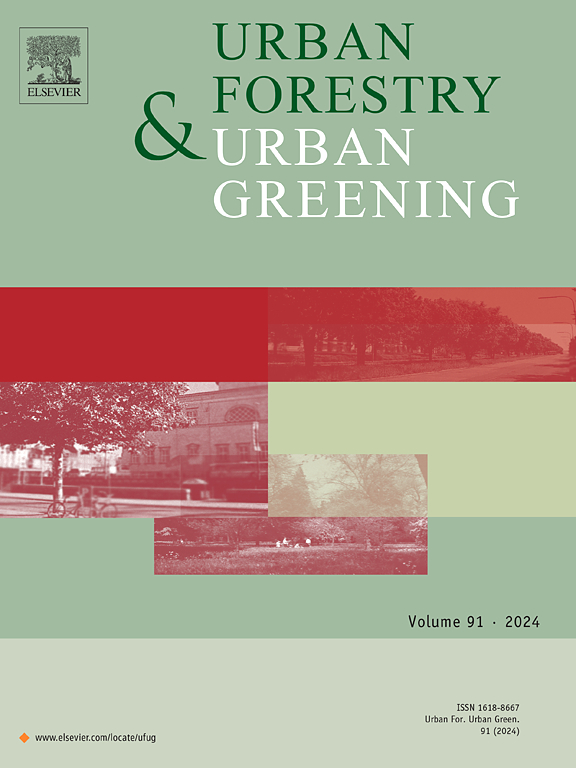(Re)greening transition of academic green spaces as a response to social and environmental challenges: The role of bottom-up initiatives
IF 6
2区 环境科学与生态学
Q1 ENVIRONMENTAL STUDIES
引用次数: 0
Abstract
While university campuses provide a substantial and diverse array of green areas, their development usually contributes to the adverse effects of urbanisation on ecosystems. However, academic green spaces may contribute to socio-ecological transitions, and higher education institutions can use their educational and scientific potential to implement sustainable development strategies. Our study explores the (re)greening transition of a university campus in Central Europe. Specifically, we aim to identify the role of grassroots university activism in this process, the driving forces behind it, and the challenges encountered. We understand the (re)greening transition as a multifaceted shift that includes changes in landscaping practices, the implementation of nature-based solutions, and the reduction of impermeable surfaces wherever possible. We identified three stages of the transition: green opposition, green acupuncture with collaborative projects, and patchworked palimpsest with the institutionalisation of bottom-up initiatives. These stages constitute a response to an earlier period of top-down ‘terraformation’ that destroyed semi-natural habitats and implemented traditional landscaping. While the (re)greening transition cannot fully restore pre-construction habitats, the academic green spaces on campus now serve a wider range of functions, including aesthetic, social, regenerative, ecological, educational and scientific roles, thereby enhancing the cultural, regulating and provisioning ecosystem services provided by these spaces.
求助全文
约1分钟内获得全文
求助全文
来源期刊

Urban Forestry & Urban Greening
FORESTRY-
CiteScore
11.70
自引率
12.50%
发文量
289
审稿时长
70 days
期刊介绍:
Urban Forestry and Urban Greening is a refereed, international journal aimed at presenting high-quality research with urban and peri-urban woody and non-woody vegetation and its use, planning, design, establishment and management as its main topics. Urban Forestry and Urban Greening concentrates on all tree-dominated (as joint together in the urban forest) as well as other green resources in and around urban areas, such as woodlands, public and private urban parks and gardens, urban nature areas, street tree and square plantations, botanical gardens and cemeteries.
The journal welcomes basic and applied research papers, as well as review papers and short communications. Contributions should focus on one or more of the following aspects:
-Form and functions of urban forests and other vegetation, including aspects of urban ecology.
-Policy-making, planning and design related to urban forests and other vegetation.
-Selection and establishment of tree resources and other vegetation for urban environments.
-Management of urban forests and other vegetation.
Original contributions of a high academic standard are invited from a wide range of disciplines and fields, including forestry, biology, horticulture, arboriculture, landscape ecology, pathology, soil science, hydrology, landscape architecture, landscape planning, urban planning and design, economics, sociology, environmental psychology, public health, and education.
 求助内容:
求助内容: 应助结果提醒方式:
应助结果提醒方式:


